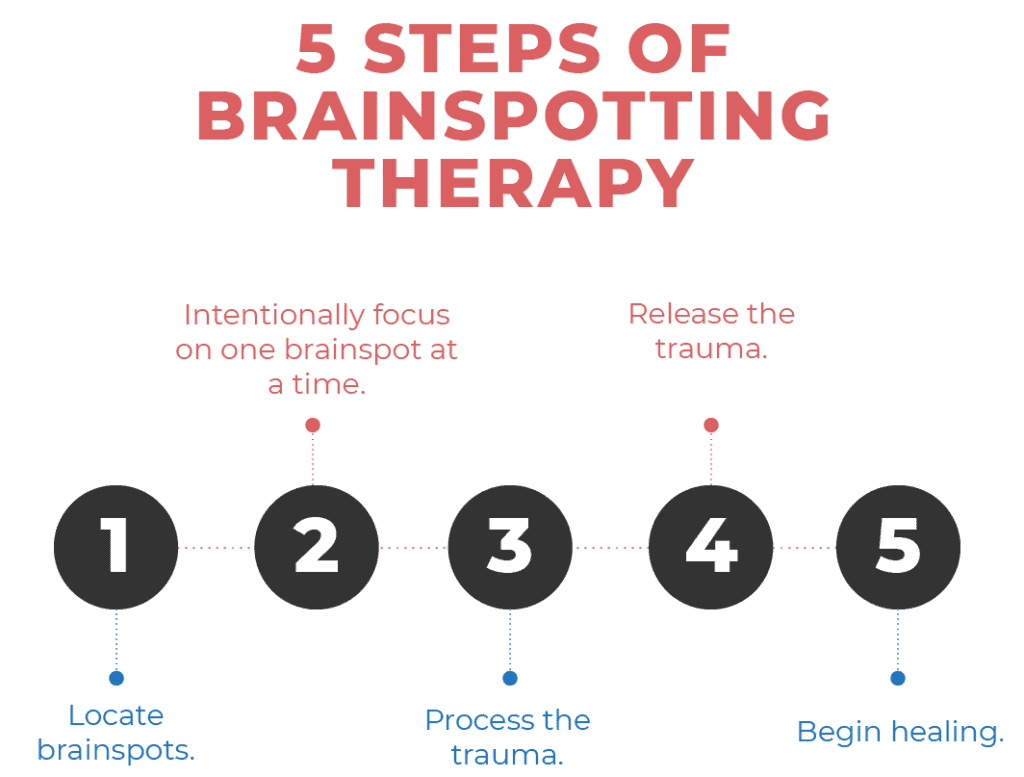
Brainspotting is a form of reprocessing therapy with historical and philosophical roots in EMDR. Eye movements are a fundamental tool in EMDR, which are used to access brain connections associated with specific states of physical/emotional activation related to past trauma or overwhelming experience. Brainspotting, in a related sense, utilizes eye position.
“Where you look affects how you feel,” says the founder of Brainspotting David Grand. Like it’s cousin EMDR, Brainspotting is not a form of talk therapy but accesses the brain’s ability to heal itself through neurological reprocessing and making new connections on a cellular level. This takes place not through logic and conscious thought, but silently in a deeper level of the brain known as the limbic system. This is where the emotional programming of trauma takes place. The resulting post-traumatic emotional dysregulation and distress are not signs of weakness, but the body’s organic way of defending itself against a perceived threat. Physical symptoms including chronic pain, abdominal issues, and even seizures can occur due to the stress put on the person’s system.
Brainspotting targets the deep-set connections trauma puts in place and helps the brain break the programming with new connections. All this is done without the conscious direction of the client, while the therapist follows the lead of the client’s inherent wisdom in attunement as if “staying in the tail of a comet.” Brainspotting sessions often involve debriefing time in which the conscious insights generated are further explored and discussed, but the real test is noticing the changes that happen between sessions.
Brainspotting can also be used to expand a person’s inner resources, enhance creativity, and improve performance. Writer’s can often break a spell of writer’s block, artists can more deeply immerse themselves in character, and athletes can improve their personal bests. A course of Brainspotting therapy often involves trauma processing and resource expansion in combination.
Subscribe now to get these tips sent right to your inbox!
© Rennet Wong-Gates Psychotherapy |